New products at Crocus
by Sarah - May 15th, 2010.Filed under: Crocus, New Products.
New items at Crocus
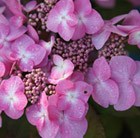
lacecap hydrangea £17.99
Position: full sun or partial shadeSoil: moist, well-drained, moderately fertile, humus-rich soilRate of growth: fast-growing Flowering period: June to October Flower colour: pink (in normal or alkaline soils)Hardiness: fully hardyThe latest member of the ‘Endless Summer’ group of hydrangeas, this cultivar produces masses of pink lacecap flowers for a very long period throughout summer and autumn – usually right up to the first hard frosts. These flowers are held on sturdy, upright, reddish stems and create a really beautiful splash of colour. Ideal for mixed borders, they also cope well in large pots as long as they are kept well watered. In acidic soils, the flower colour will become bluer.Garden care: Leave the old flower heads in place through the winter. As the new shoots start to emerge in spring cut back a third to a quarter of the previous seasons flowering stems to the base and cut back the remaining flower heads to the first pair of buds.
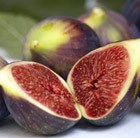
fig £10.99
Position: full sunSoil: will tolerate most soils, except very badly drainedRate of growth: averageHardiness: fully hardyThis deciduous, spreading shrub is highly ornamental, with large, glossy, palmat palmate leaves. It is best grown against a south or south-west facing wall, where, in long, hot summers it will produce an abundant crop of brown, pear-shaped fruit with red flesh. These figs are rich and sweet and available for picking from August to September. An interesting and easy plant to grow, and one of the oldest fruits in cultivation. Garden care: Plant in a 40cm (15in) pot in the ground or in a lined pit to restrict root-growth as unrestricted root growth leads to poor fruiting. Prune in spring when all chance of frost has past. Remove any frost-damaged or weak branches, and thin out shoots to let light in. Some pruning may be required in summer – trim all new shoots back to five or six leaves.Figs are capable of producing three crops of fruit every year, but in our climate it is the tiny little ones that you find tucked into the leaf axils in autumn, that if protected from frosts, will go on to ripen in their second summer. Therefore if you are growing the fig for its fruit rather than its foliage, you should remove any developing fruits that are larger than a pea in autumn, and either cover the crown of the tree with a blanket of frost fleece or try to gently pack it with straw. This will keep them snug and warm throughout winter and push the plants energy into the development of the young fruits, which should grow into fully ripened figs next year.

Japanese skimmia (male) £8.99
Position: partial to full shadeSoil: moderately fertile, moist but well-drained soilRate of growth: averageFlowering period: April to MayFlower colour: pinkOther features: male plantHardiness: fully hardyA compact male shrub with red-margined, deep green leaves. Dark red flower buds are produced in autumn and these last all through the winter until the flowers open in spring. A great shrub for growing in a pot or for filling in gaps in the garden border.Garden care: Lightly trim after flowering, if necessary. To improve the moisture retention qualities of the soil add plenty of well-rotted compost when planting.
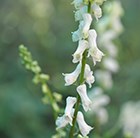
Monkshood £8.99
Position: full sun or partial shadeSoil: moist, fertileRate of Growth: averageFlowering period: June and JulyFlowers: ivory whiteOther features: lobed, leathery, dark green leavesHardiness: fully hardyErect spikes of creamy-white, helmet shaped flowers in late spring and early summer and deeply lobed, dark green leaves. This elegant monkshood is one of the first of the to bloom and is perfect for illuminating a lightly shaded woodland garden, as the distinctive white flowers are best in cool, moist conditions. Garden care: Prepare an extra deep planting hole at least 45cm (18in) deep, adding well-rotted organic matter to prevent the soil from drying out in summer. Always wear gloves when working with monkshood since all parts of the plant are poisonous and a potential skin irritant.
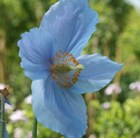
himalayan blue poppy £7.99
Position: full sun or partial shadeSoil: humus rich, moist, well drained, neutral to slightly acid soilRate of growth: averageFlowering period: JuneFlower colour: bright blueOther features: toothed, hairy, bluish green leavesHardiness: fully hardySpectacular, saucer shaped, bright blue flowers with golden centres in early summer above rosettes of toothed, hairy, bluish green leaves. This elusive Himalayan blue poppy looks lovely growing in a shady woodland setting. It is short-lived perennial and unless planted in moist soil can die after flowering, though it usually does produce several crowns around the parent plant which will bloom the following year.Garden care: Stake with bamboo canes or brushwood before the flowers appear. Deadhead regularly to prolong flowering. Apply a generous 5-7cm (2-3in) mulch of bark chippings, well-rotted leaf mould or composted pine needles around the base of the plant in spring.
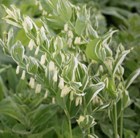
common Solomon’s seal £7.49
Position: partial shadeSoil: fertile, humus-rich, moist, well-drained soilRate of growth: average to fastFlowering period: May to JuneFlower colour: creamy-whiteHardiness: fully hardyIts graceful, arching stems of dark green, slightly pleated, leaves streaked with pale green and white are enough to earn this plant its place in the garden. But in early summer, when these stems are strung with clusters of green-tipped, creamy flowers that hang like little bells, it is simply gorgeous. The flowers are followed by small, black fruit. Solomon’s Seal prefers a cool position in a shady spot and looks wonderful in a woodland setting among shade-loving ferns. Garden care: Cut down to the ground in autumn. Lift and divide large colonies in early spring, taking care not to damage the young shoots. Apply a mulch of well-rotted leafmould or garden compost in spring.
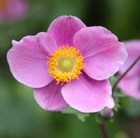
windflower £6.49
Position: full sun or partial shadeSoil: moist, fertile, humus-rich soilRate of growth: average Flowering period: July to SeptemberHardiness: fully hardyAs the name suggests, Hadspen Abundance is very free-flowering and keeps on producing masses of cup-shaped, deep pink, semi-double flowers with reddish-pink outer petals from July through to September. A fabulous plant for adding late summer colour to the garden, this anemone will also grow in sun or shade. The leaves are semi-evergreenand deeply cut and bring interesting texture to a herbaceous border. It is clump-forming and looks good with most late-flowering plants, especially if it is allowed to spread gently among perennials and shrubs.Garden care: Cut back the stalks after after the flowers have faded, and tidy up old dead leaves in March, then mulch well. Avoid moving the plant since it resents disturbance. Where necessary lift and divide congested clumps in autumn or early spring.






